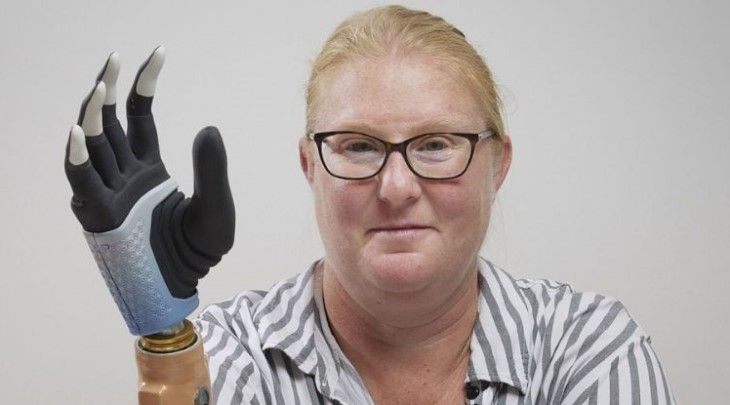
Once regarded as the stuff of science fiction, the integration of artificial intelligence into prosthetics has shattered previously held limitations, offering unparalleled autonomy to individuals facing limb loss. Let's turn our attention to a groundbreaking case: Karin, a 50-year-old Swedish woman whose life has been dramatically transformed by a bionic hand unlike any other.
The story of Karin
Karin had been living without her right hand for two decades, the aftermath of a debilitating farming accident. She had managed, but her daily activities were severely restricted. The absence of her hand was also haunted by phantom pain, a sensation she described as feeling as though her missing hand was being churned through a meat grinder.
A confluence of minds from Sweden, Italy, and Australia united to redefine what was possible in prosthetic technology. Spearheaded by robotics engineer Max Ortiz Catalán, this international team was affiliated with prestigious institutes like the Bionics Institute in Melbourne, Australia, and the Center for Bionics and Pain Research in Sweden. They recently broadcasted Karin's uplifting tale in the esteemed journal, Science Robotics, heralding a new era in the realm of prosthetics.

Image: (Bionics Institute)
What sets Karin's bionic hand apart? This prosthetic marvel uses pioneering technology that connects directly to a user’s bones, muscles, and nerves. This nexus establishes a human-machine interface, enabling artificial intelligence to translate brain signals into precise movements. Karin’s prosthetic hand is equipped with internal electrodes, a feat declared as the first of its kind for robotic hands designed for amputations below the elbow.
This isn’t just about dexterity and motor functions; the bionic hand has significantly diminished Karin's phantom pain. The result? She now requires far fewer medications than before. Her quality of life has improved manifold; she can perform 80% of her daily tasks without any hindrance, whether it's preparing a meal or fastening a zipper.
The development of such technology does not come without its financial implications. Though the specific numbers were not disclosed for Karin’s case, it's worth noting that advancements of this nature often require enormous investment. That said, when set against the monumental leaps in user experience and potential applications, many would argue that the investment is more than justified.
Ortiz Catalán explained that one of the groundbreaking techniques employed in Karin's case was ‘osseointegration.’ This involves planting an implant into the bone in such a way that the bone cells grow tightly around it. Once in place, the artificial limb can be attached directly to the skeleton. Importantly, muscle grafts containing electrodes are also incorporated, ensuring amplified signals for the interface.
Even three years ago, when Karin was initially fitted with her prosthesis, this was a one-of-a-kind innovation. Most available prosthetics at that time had sensory electrodes on the exterior, situated just under the synthetic 'skin.' This traditional setup invariably dilutes the quality and quantity of sensory signals between the robotic hand and the human neural system.
Looking forward, it’s evident that this technology can be a cornerstone in the future of prosthetic development. "The fact that [Karin] has been able to use her prosthesis comfortably and effectively in daily activities for years is a promising testament to the potential life-changing capabilities of this novel technology," opined Ortiz Catalán. In particular, its efficacy in alleviating phantom limb pain poses exciting possibilities. The Bionics Institute's CEO, Robert Klupacs, echoed similar enthusiasm for what lies ahead.
In conclusion...
The evolution of prosthetic technology, fueled by international collaboration and sheer ingenuity, has opened doors once thought permanently closed. And while one cannot put a price on autonomy and the relief from chronic pain, one thing is clear: we are merely at the precipice of what is possible when human endeavor meets artificial intelligence in the quest to enrich lives.